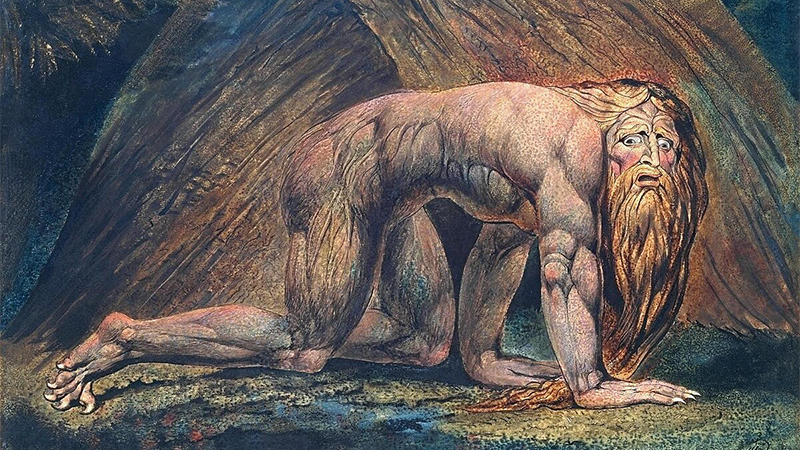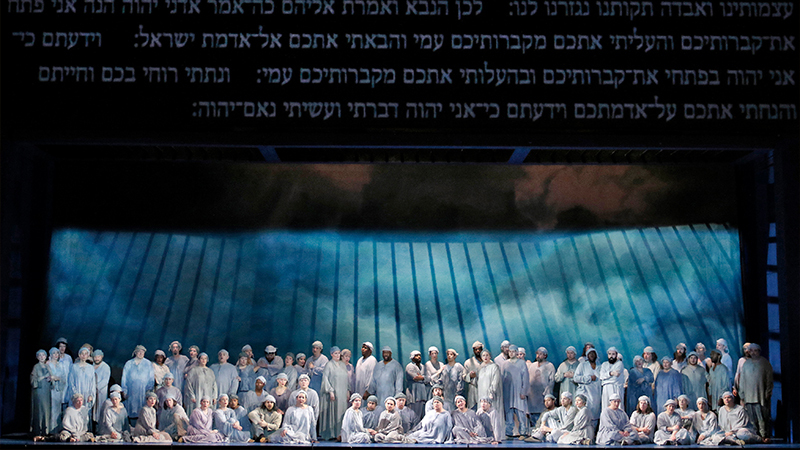-
5 Things to Know about NABUCCO
By COC StaffPosted in 24/25 Season
Nabucco, the opera that made Verdi famous and provided an anthem for the nascent Italian nation, is a work of raw musical power and truly epic storytelling. Never before performed at the COC, Verdi’s classic traces a people’s journey from enslavement to freedom and the transformation of one man’s ruthless quest for glory into a history-defining religious conversion.
Ambition, love, intrigue, madness—this opera has it all. Read on for 5 Things To Know about Nabucco and its composer, before joining us at the opera house this fall!
SUBSCRIBE NOW
Say that five times fastNabucco is an abbreviation of Nabucodonosor—also known as Nebuchadnezzar II, the Babylonian king who captured Jerusalem in 597 B.C. The title character of Verdi’s opera is considered to be a composite of the Biblical and historical Nebuchadnezzar and the Persian conqueror Cyrus the Great, under whom the city was freed and the Jewish temple rebuilt in 537 B.C. In the Book of Daniel, Nebuchadnezzar’s madness was said to have lasted for seven years; significantly longer than in Verdi’s opera, in which his period of paranoia is only a brief phase between his conversion from ruthless despot to redeemed and loving father.
“Born under a lucky star”Nabucco was the opera that definitively established Verdi's reputation as a composer; as he noted, “this is the opera with which my artistic career really begins. And though I had many difficulties to fight against, it is certain that Nabucco was born under a lucky star.” The road to success had been riddled with setbacks, including the deaths of his wife and two young children and the failure of his second opera, Un giorno di regno—after which Verdi had vowed never to compose again. Only after reading Temistocle Solera’s libretto was he convinced to set pen to paper once more, and Nabucco was completed less than a year later, in 1841.
An international success
Nabucco was a runaway success from the start, premiering as far afield as St. Petersburg and Buenos Aires within 10 years of its first performance. In 1843, Donizetti conducted it in Vienna, and in 1846 it appeared at Her Majesty’s Theatre in London retitled as Nino (since the authorities there considered depicting biblical characters on stage to be improper). The following year (1847) saw the premiere of Verdi’s Macbeth—a gripping match for the epic power struggles that featured in Nabucco, featuring a formidable antiheroine in Lady Macbeth, equalled only by Nabucco’s Abigaille in her ruthlessness and lust for power.

Verdi’s hymn to freedomNabucco’s most well-known musical moment is “Va, pensiero, sull’ali dorate” (“Fly, thought, on golden wings”), better known as the Chorus of the Hebrew Slaves. The chorus is a dramatisation of Psalm 137, which begins with the words “By the waters of Babylon, we sat down and wept” and was also famously associated with the African-American struggle for freedom (most notably quoted by the abolitionist Frederick Douglass in his 1852 speech “What to the Slave is the Fourth of July?”).
“Va, pensiero” was adopted as an unofficial anthem by the burgeoning Italian unification movement—known as the Risorgimento—and was performed spontaneously by the mourning crowds at Verdi’s funeral. A choral performance of the piece opened the Metropolitan Opera’s 2001 season, 11 days after the destruction of the World Trade Center.Go big or go homeBlood-and-thunder melodrama calls for a cast to match the epic proportions of the story, and Nabucco doesn’t stint here. In this production, the chorus is expanded to include 82 singers who portray both Babylonian soldiers and Hebrew captives, for whom over 200 costumes have been designed. Supplementing the musicians in the orchestra pit, additional instrumentalists play offstage. Capped off by some of opera’s greatest voices, the combined effect is one of ferocious emotional force that you most certainly won’t want to miss!
Nabucco runs from October 4-25, 2024 at the Four Seasons Centre for the Performing Arts.
_20240704163452_0.png)